Contents
Everything you Need to Know about Lubrication/Bearings/Gears in Cement Industry
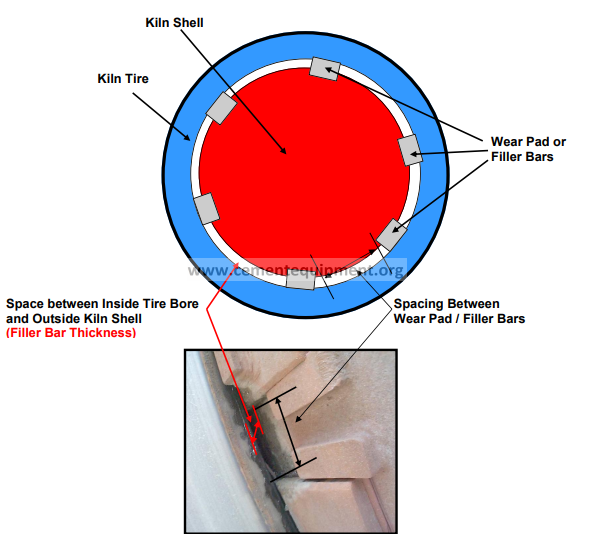
Lubrication/Bearings/Gears
Field Operator Certification
Lubrication/Bearings/Gears
Objective 1 – Purpose
-The purpose of lubrication is to reduce friction, prevent wear, remove heat and prevent rust and corrosion.
Objective 2 – Principles of Lubrication
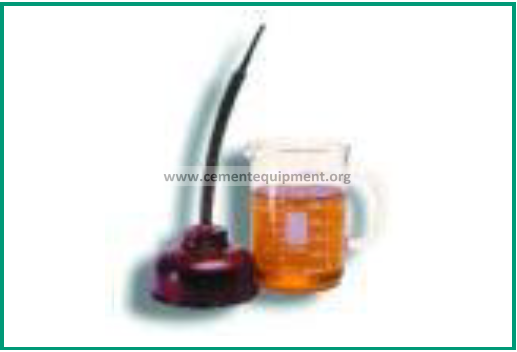
Principles of Lubrication (cont’d)
-Lubrication Terms and Principles
-Friction
-A force that a body must overcome when it slides across another.
-Solid or sliding friction occurs mainly due to “asperities” (roughness) present in the two surfaces that rub together.
-Whenever friction is overcome, dislocation of the surface particles generates heat that could become destructive.
-Lubrication
-The principle of supporting a sliding load on a friction-reduction film is known as lubrication.
-The substance of which the film is composed is a lubricant, and to apply it is to lubricate.
-Lubrication categories
-Hydrodynamic lubrication
-Oil Wedge is Formed
-Surface Contact Area is Flooded
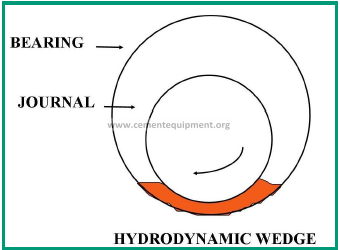
Lubrication categories (cont‟d)
-Elastohydrodynamic lubrication (EHL)
-Film Developed Between Two Heavily Loaded Surfaces in motion
-Oil Viscosity Increases as it is Forced into Load Zone
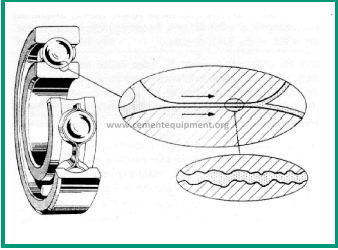
Lubrication categories (cont‟d)
-Boundary lubrication
-Very Thin Film of Lubrication
-Film Strength Additives Must be Used
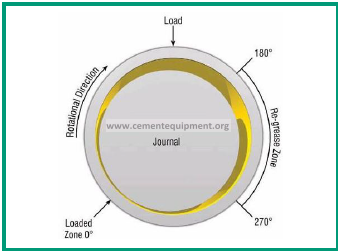
-Lubricants
-All liquids will provide lubrication to a degree, but some do it a better than others. There are two main groups of lubricants, oil (petroleum) lubricants and grease lubricants.
-For almost every situation, petroleum products have been found to excel as lubricants.
-Lubricant Properties
-Viscosity is one of the main properties of any oil lubricant. It is the measure of a lubricant‟s resistant to flow
-Viscosity is commonly measured by petroleum industry in centistokes, which numerically equal to mm2 (square)/s
-Viscosity is often the first consideration in selecting lubricant oil for specific applications
-Lubricant Properties – Viscosity (cont’d)
-Operational condition VS viscosity needed
-Higher load requires high viscosity
-Higher temperature requires higher viscosity
-Increased speed requires lower viscosity
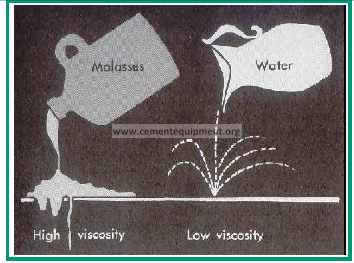
-Lubricant Properties – Viscosity (cont’d)
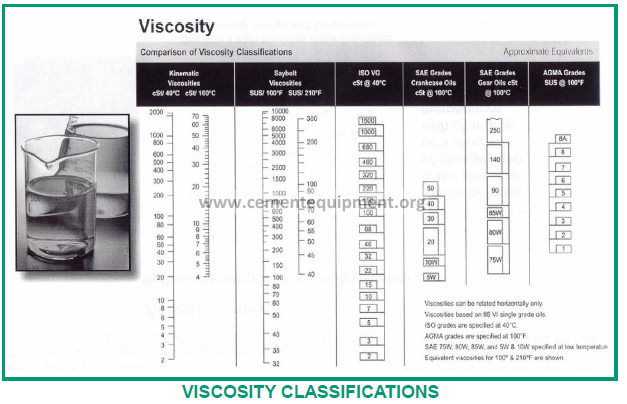
-Lubricant Properties (cont’d)
-Viscosity index. Lubricants tend to thin out when heated and to thicken when cooled.
-The property of resisting changes in viscosity due to changes in temperature can be expressed as the Viscosity Index (VI).
-The higher the VI number of an oil, the less the tendency for its viscosity to change with changes in temperature.
Lubricant Properties – Viscosity index (cont’d)
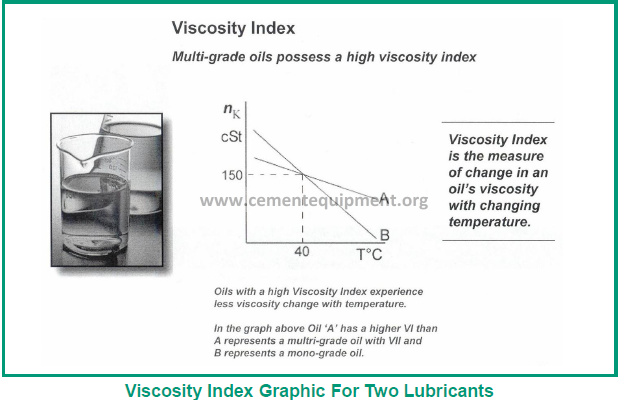
-Lubricant Properties (cont’d)
-Pour point. The lowest temperature to which oil can be chilled and still poured from a container is approximated by its pour point.
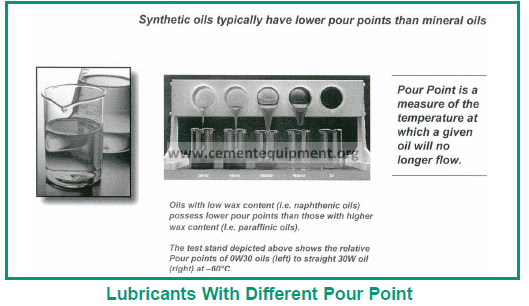
-Flash point. Minimum temperature at which sufficient liquid is vaporized to create a mixture of fuel and air that will burn if exposed to a source of spark.
-Consistency or penetration number (greases). The consistency of lubricating grease is defined as its resistibility to deformation under an applied force, in other words its relative stiffness or hardness.
-Dropping point. The temperature at which the oil separates from the thickener.
-Structural stability. The ability of the grease to resist changes in consistency during mechanical working
Objective 3 – Types of Lubricants
Mineral Oils
-Consist of base oil and additives which determine their performance characteristics.
-The base oil is responsible for the typical properties of oil. The additives, however, determine its actual performance by influencing the base oil‟s.
-Oxidation stability
-Anticorrosion properties
-Wear protection
-Wetting behaviour
-Viscosity-temperature behaviour
95% of lubricants are derived from petroleum crude oil.
Types of Lubricants (cont’d)
-Mineral Oils (cont’d
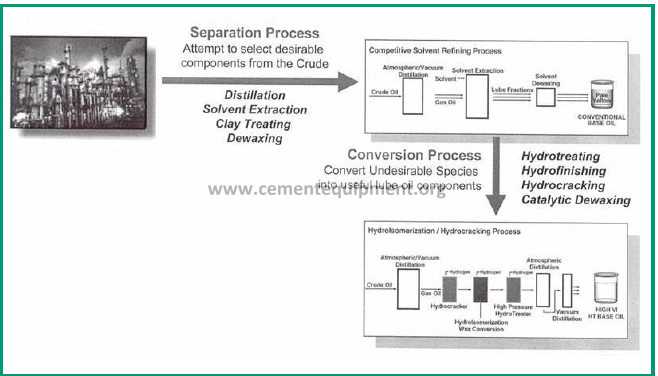
Synthetic Oils
-Chemically synthesized (polymerization) and designed to have specific properties.
-low pour point and /or
-High flash / fire point and/or
-High viscosity index and /or
-Oxidative and thermal stability and /or
-High shear strength
-Industrial grease
-Is a fine dispersion of an oil-insoluble thickening agent, usually soap, in a fluid lubricant which is generally mineral oil.
-Adequate Lubrication
-Prevent Corrosion
-Seal Out Contamination
-Resist Leakage
-Resist Change in Consistency
-Tolerate Some Contamination
-Seal Compatibility
-Suitable for Method of Application
Industrial grease (cont’d)
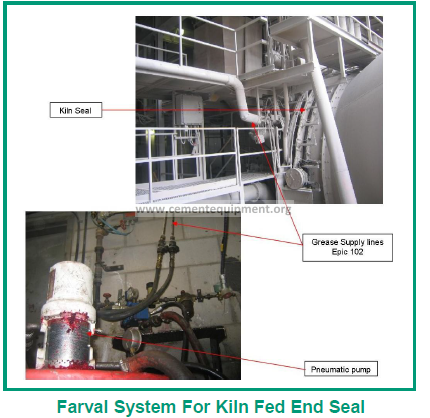
-Grease vs. oil
-Oil
-Better Lubrication
-Easier to Fill / Drain
-Correct Amount More Easily Controlled
-Heat / Cleaning
Grease
-Leakage Control
-Reduced Maintenance
-Acts as a Seal from Contamination
-Solid Lubricants
-There are may type of solid lubricant used for different applications, like synthetic, metallic or mineral powders such as PTFE (Teflon), copper, graphite, etc.
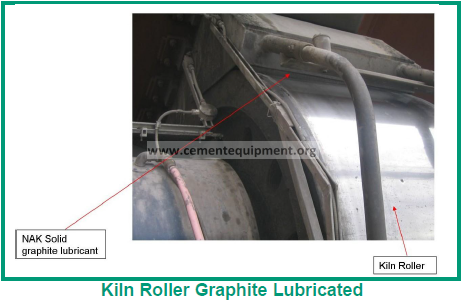
Synthetic lubricants
Pure hydrocarbon, manufactured from raw materials derived from crude oil with a controlled molecular structure with predictable properties.
-Polyglycols
-Advantages
–Largest Single Class
–High VI (150)
–Good Low Temp Flow
–Good Thermal/ Oxidation Stability
–Low Volatility
-Disadvantages
–Not Compatible w/ Mineral Oils
–Not Miscible w/ Additives Common to Lubricants
–Surface Paint and Finish Effects
-Synthetic lubricants (cont’d)
-Organic esters
-Advantages
–Oldest Type
–Diesters
–Excellent Low Temp
–High VI (140)
–Good Thermal/ Oxidation Stability
-Disadvantages
–Seal Compatibility Concerns
–Additives Not Soluble
–Surface Paint / Finish Effects
–Not Compatible w/ Mineral Oils
Phosphate esters
Advantages
–Excellent Fire-Resistant Properties
–Fair High Temp Stable
–Low Pour Point
Disadvantages
–Poor VI Characteristics
–Considerable Effect on Paints and Finishes
–Excessive Seal Swell
–Extremely High Cost
–Not Compatible w/ Mineral Oils
-Advantages of synthetics vs. conventional mineral oils
-Longer Life
-Fuel Savings
-Better Cold Weather Start Up
-Better Protection At High Temperatures
-Longer Equipment Life
-Disadvantages of synthetics vs. conventional mineral oil
-Cost
-Leakage
Synthetics vs. conventional mineral oils
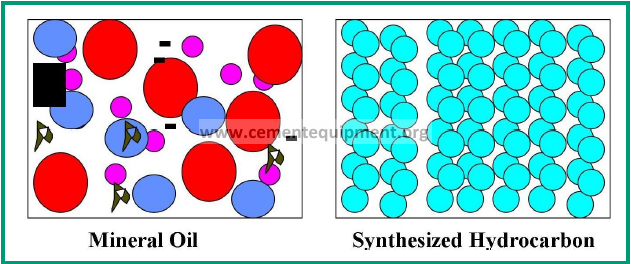
-Additives
-Purpose:
-To improve the performance of the base oil
-Impart entirely new performance characteristics to a lubricant
-Reduce the rate at which undesirable changes take place
-Additives (cont’d)
-Antiwear agent (aw)
-Provides chemical film to reduce metal-to-metal contact when thin films of oil are created.
-Enhances the antiwear characteristics of oil to permit loadings of double or triple that of non-additized oil.
-ZDP- most popular antiwear agent.
-Can be found in hydraulic oils
-Extreme pressure (ep)
-Reacts with metal surface to provide sufficient antiwear material to carry even heavier loads than film strength additives allow
-Can be found in gear oils, greases
-Oxidation inhibitors
-peroxide decomposers: convert peroxides into harmless compounds.
-Chain stoppers: interrupt the chain reaction between oxygen and hydrocarbon radicals to prevent or slow the formation of acidic material and sludges.
-Metal deactivators: metals that may have catalytic effect on oxidation are covered by agent. (copper, lead, iron)
-Can be found in engine oil
-Detergent
-Metallic soaps with neutralization and cleanliness power.
-Because of metallic nature it leaves a slight ash when oil is burned.
-Metals are usually calcium, magnesium, or sodium.
-Can be found in engine oil
-Dispersant
-Helps prevent sludge, varnish and other engine deposits by keeping particles suspended in a colloidal state.
-usually non-metallic – ash less dispersant
-Can be found in engine oil
-Rust inhibitor
-Plates out on metal surfaces.
-Protective film is formed that protects the surfaces from contact with water.
-Can be found in gear oils
Viscosity (VI) improver
-Synthetic, high-molecular-weight polymers which improve the viscosity index by coiling and uncoiling in response to temperature.
-Increase the viscosity proportionally, more at higher temperatures than low.
-Can be found in engine oil
-pour point depressant
-Improves the low-temperature fluidity of mineral oils and reduces wax formation at low temperature.
-Can be found in low pour hydraulic oil
Molybdenum disulfide
-moly: a black, lustrous powder that serves as a dry-film lubricant
-Can be found in grease
-Defoamant
-Silicone Polymer molecules which attach themselves to air bubbles in the foam, producing points of weakness.
-Can be found in gear oil
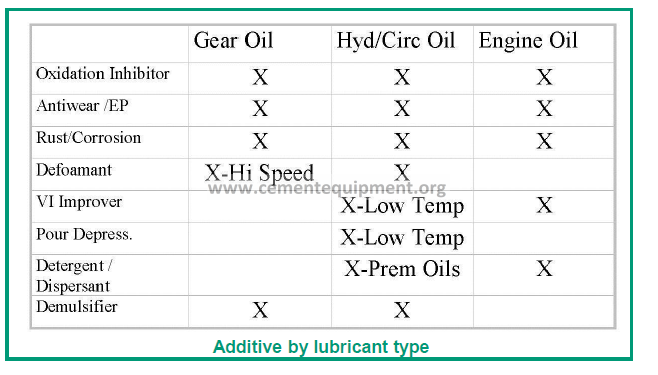
Objective 4 – Lubrication systems
-Oil bath
-Mainly used to lubricate bearings or low speed gears. The oil is poured in a reservoir and as the part rotates they get wet by the lubricant.
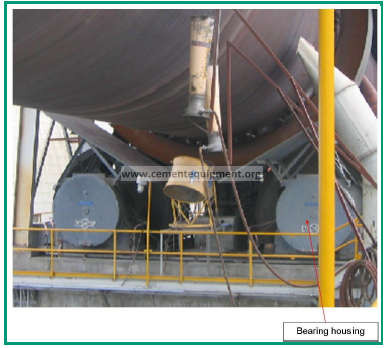
Oil Bath System Used on Kiln Bearings. Te bearing is submerged into the oil and a scoop pick ups the oil to lube the roller trunion
Lubrication systems (cont’d)
Splash
-Very common lubrication method used in gearboxes. As the gear turns, it picks up oil and splashes it to the matching gear tooth and bearings.
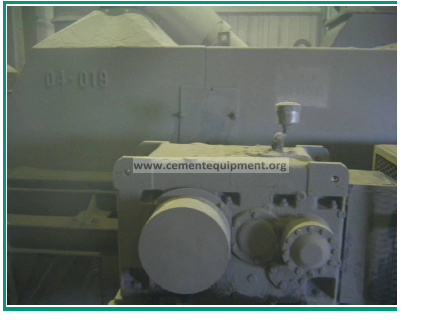
In this reducer the gears pick up the oil from the bottom of the reservoir and splash it to bearings and higher gears
-Circulating system
-Specially used to control lubricant temperature or pump oil to areas where conventional methods would not work.
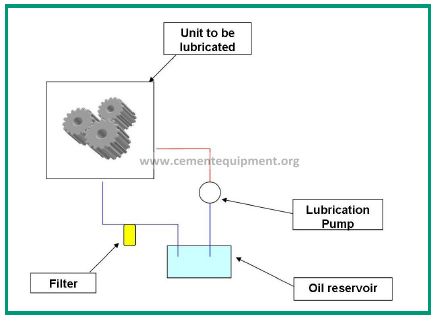
Circulating system (cont’d)
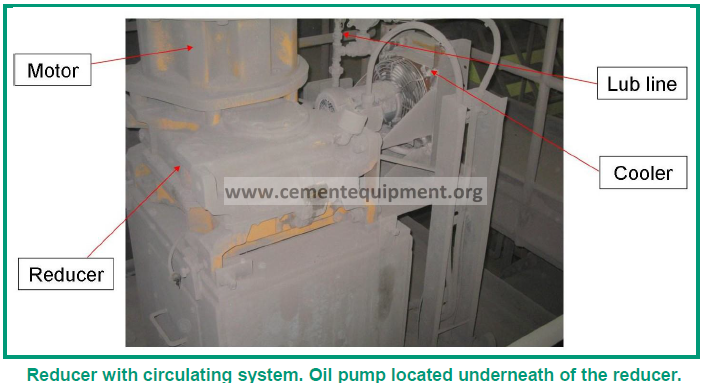
Spray System
-The lubricant is pumped from a drum to a set of nozzles by applying compressed air. The lubricant is sprayed to the gear periodically for a pre-determined period of time depending of gear size and speed.
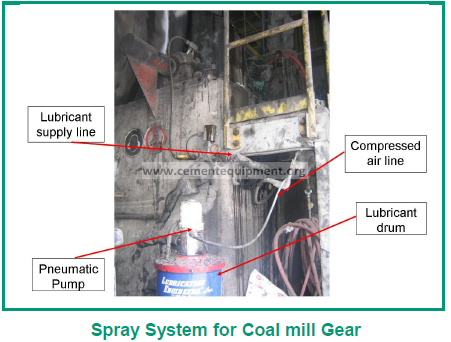
Manually
-Apply grease to bearings. Based on equipment speed and bearing size, the lubrication frequency and amount is previously determined.
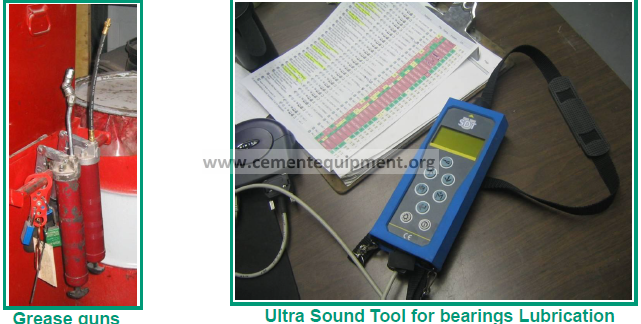
Central System (Farval)
-A complete system consists of the central station with its pump, reservoir, reversing valve, and timer; distribution lines and measuring valves
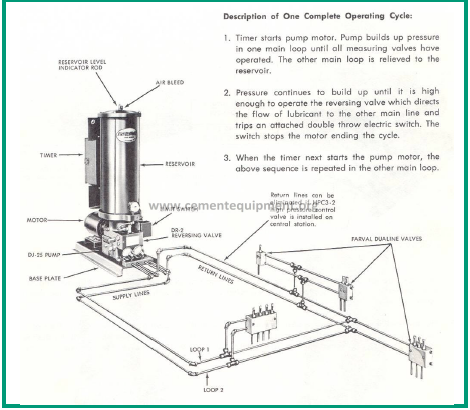
Grease Central (Farval) System used in Material stackers and reclaimers
Objective 5 – Lubricated equipment
-Three main types of equipment need lubrication:
-BEARINGS – two types, plain and roller element or antifriction
-GEARS – spur, helical, herringbone, spiral bevel, tapered roller, worm, plain journal, ball and hypoid
-CYLINDERS – hydraulic pumps
Note: This equipment will be covered in another module.
Lubricated equipment (cont’d)
-BEARINGS
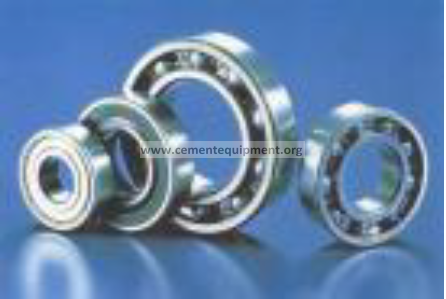
BEARINGS (cont’d)
-Bearings main functions
-Support the Load
-Prevent/Minimize Movement
-Minimize Friction
Bearing types
.Plain – Friction Bearings
–Advantages: Simple in Design
–Disadvantages: Higher Starting Torque Required
–Type of plain bearing: Journal bearings
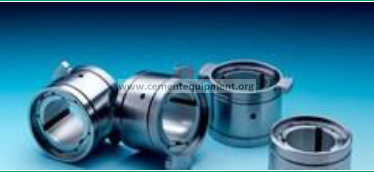
-BEARINGS – Bearing types (cont’d)
Rolling Element or Anti-friction
–Advantages: Minimal Friction
–Disadvantages: Complex in Design and Maintenance
–Types of rolling element bearings:
»Roller Bearings: cylindrical, spherical, tapered, needle
»Ball Bearings: single row, double row, angular contact
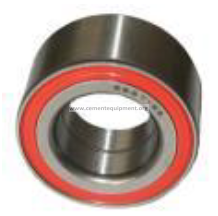
-BEARINGS (cont’d)
-Types of Bearings and their application
-Needle Bearing – Compact design with space limitations
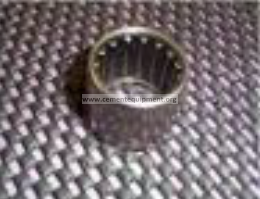
BEARINGS – Types of Bearings and their application (cont’d)
-Spherical Roller Thrust Bearings – heavy thrust loads or combined loads that are predominantly thrust
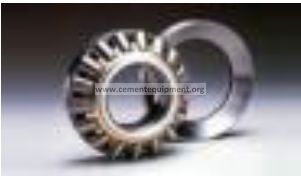
-Taper Bearing – Radial and axial loads acting simultaneously; carries thrust in one direction
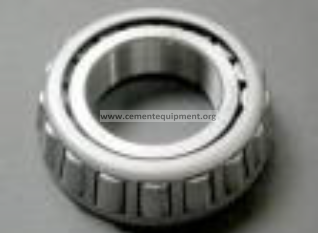
-Cylindrical Bearings – high radial load capability and high speed applications with minimal thrust loads
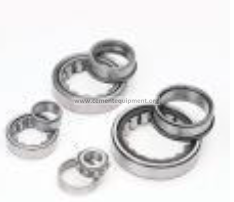
-Spherical Bearings – inherently self-aligning. Can withstand radial loads and heavy thrust loads carried in either direction
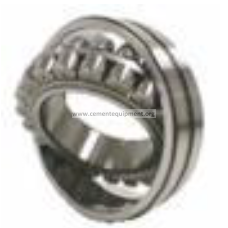
-Single or Double Row Spherical Bearing – high speed radial load with moderate thrust.
-Plain Bearing – Automotive rod and main bearings
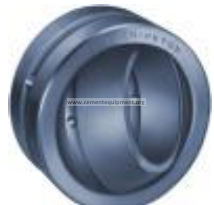
-Angular Contact Bearings – heavy thrust load; minimal radial load
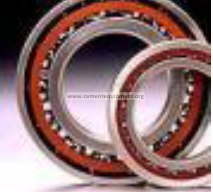
-Lubricants used for bearings
-Oil
-Grease
Methods for lubricating Bearings with oil
–Circulation System: oil is pumped from the reservoir, through a cooler, to the bearings and drains back to the reservoir.
-Oil Bath System: Oil Bath System – bearings are partially submerged in a static oil system (pool of oil).
-Oil Splash System: has a static oil reservoir. Gears rotating in the oil reservoir splash oil into adjacent bearings or catch troughs which distribute the oil through channels to outlying bearings by gravity flow.
-Oil Mist System: delivers very fine particles of oil in a low velocity, low pressure air stream
Hand Packing: bearing usually packed by hand. Bearings should only be 1/3 filled.
-Gun Packing: housing is designed such that re-lubrication can be performed via grease fitting using a pressure grease gun.
-Centralized System: Centralized System – supplies grease with a hand or power operated pump which takes grease from a reservoir and forces it through supply lines to bearings.
-Automatic Lubricator ???? Gas activated
Advantages to using grease in a bearing
-Better staying capability than oil; good where frequent oiling intervals are not possible (poorly accessible locations)
-Provides metal separation at low speeds and high loads where the oil wedge will not form.
-Good sealant for keeping out contaminants (dirt and water)
-Grease – rule of thumb
-The smaller and faster the bearing the more frequent the interval
-For Every 27 °F increase above 158 °F the interval should be halved
-Contamination requires more frequent lubrication to purge system
Disadvantages to using grease in a bearing
-Poor cooling ability due to the absence of flow
-Retains contaminants due to the absence of flow
-Grease can separate/harden over time
-Since bearing is used in an oil lubricated gear box; the grease can contaminate the oil.
Causes of Bearing Failures
-Misalignment
-Vibration
-Faulty mounting/installation
-Passage of electric current through the bearing
-Inadequate lubrication
-Improper fits
Failure Conditions Present in Bearings
-Smearing: the repositioning of metal from one point to another on a single surface or the transfer of metal from one metal surface to its mating surface.
Causes – improper assembly, faulty parts, inadequate lubrication, excessive speed and shaft misalignment.
-Flaking – surface metal loss in the form of flakes or scale-like particles. Form of pitting that results from fatigue.
Causes – attributable to assembly misalignment
Failure Conditions Present in Bearings (cont’d)
-Fluting – metal removal, a type of pitting in the form of ribs, or flutes, in a regular pattern.
Causes – combination of vibration with either passage of electric current or excessive load.
-Electrical Pitting – metal removal in the form of tiny pinpoint craters.
Causes – caused by current across gap between surfaces; proper grounding will correct problem.
-Corrosion – metal loss from chemical attack due to one or more of the following; presence of water, corrosive atmosphere, corrosive (oxidized) lubricant and fretting.
Cracks – narrow openings or breaks usually without metal loss.
Causes – caused by improper fits, housing deformation, etc., that over-stress the races.
-Brinnelling – (indentation) surface depressions w/o material loss.
Causes – impact loading beyond static load capacity on a stationary bearing; improper mounting and the presence of abrasive particles.
-Broken or Damaged Races and Cages
Causes – improper mounting, lube starvation and excessive speed
-Grooves – develop when a hard, abrasive metallic particle enters a bearing and gets caught in the softer cage pocket, creating grooves as it rubs against the roller.
-Heat Checks or Thermal Cracking – minute radial cracks resulting from frictional heat that causes sliding contact within bearing.
Causes – inadequate lubrication or improper fitting practices
-Handling Damage – during installation and at any time thereafter, any and all of these can happen: broken flanges, nicks and burrs, misalignment, machining errors, excessive preload, and cage damage; great care should be exercised to prevent such things; otherwise failure is sure to follow.
Troubleshooting Potential Bearing Problems
-Excessive heat
-Excessive noise
-Damaged seals
-Excessive leakage
-Oil analysis results showing high metals or contamination
-Reasons for Grooving/Chamfering Plain Bearings
-Allow a mechanism for sufficient oil distribution to the proper areas.
-Oil viscosity in bearings:
-Too High an oil viscosity in a bearing causes: Overheating
-Too Low an oil Viscosity in a bearing causes: Too much metal-to-metal contact resulting in excessive wear and eventual failure.
Procedure for re-greasing an anti-friction bearing (roller) bearing mounted in a pillow block with a purge plug
-Pull the grease plug
-Pump grease in until you no longer see old grease coming out of plug hole. (I.E. when new grease begins to come out)
-Run bearing for a couple of minutes to allow internal pressure to escape.
-Stop bearing
-Put plug back in
-Restart bearing
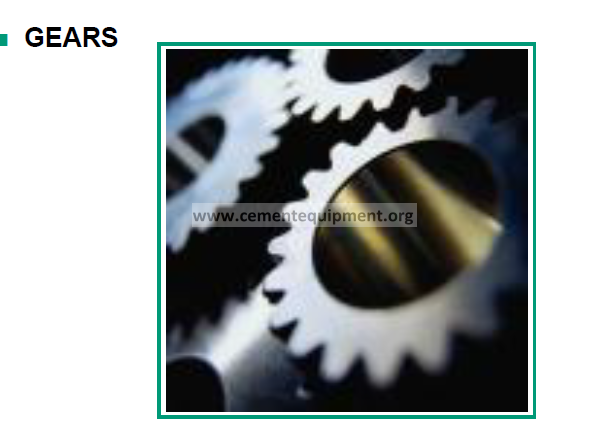
Purpose of Gearing
-Gearing is used to transmit power from a prime mover to a final source with either an increase or decrease in power or torque or a change in direction or plane from that of the initial source.
-The driving gear is the pinion and the driven gear is the bull
Gears definitions
-Addendum – Area between pitch line and tip
-Bull – Driven Gear
-Burnishing – State of gear wear which leaves shiny mirror-like finish on gear.
-Dedendum – Radial distance from pitch line to root
-Face – Surface area between pitch line to tip
-Featheredging – Gear wear mode resulting in metal flow towards gear tooth.
-Flank – Surface area between pitch line and root.
-Galling – Gear wear resulting from lubricant failure.
-Interval of Approach – Time needed for gear engagement.
-Gears definitions (cont’d)
-Misalignment – Gear wear from uneven load distribution
-Peening – Gear wear resulting in metal flow towards gear end tips
-Pinion – Driving Gear
-pitch Circle – Imaginary line of contact for outermost points in gear circle.
-Pitting – Gear wear resulting in metal removal along pitch line
-Root – Intermost region of gear tooth
-Scoring – Lateral gear wear along face and flank
-Scuffing – Lateral gear wear along gear face and flank
-Spalling – Severe pitting
–Tip – Outermost region of gear tooth
Lubrication Factors to Consider in Gear Lube Selection
-Gear type
-Gear speed
-Reduction ratio
-Operating Temperature
-Input power
-Surface finish
-Load characteristics
-Drive Type
-Application method
-Water Contamination
-Lubrication leakage
Types of Gears
-Spur Gear – Gear set that generates with teeth that run parallel to their mounting shaft. Low speeds/light loads
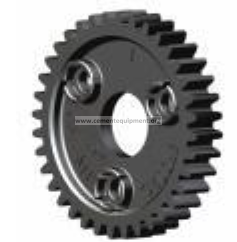
Types of Gears (cont’d)
-Bevel Gear – Gear set that operates in intersecting shafts. Low Speeds
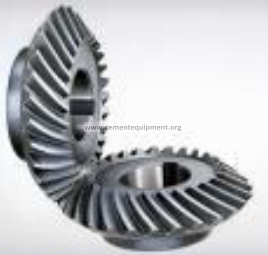
Spiral Bevel Gear – Gear with intersecting shafts. Carry more loads. Quieter/Smoother
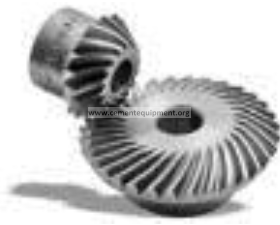
Helical – Gear with short line of contact. Load distributed over more teeth at one time.
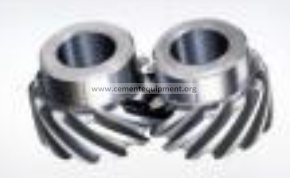
Herringbone Gear – Gear that enables the opposing thrust forces to be cancelled out. Parallel shafts. Operate under shock and vibration loading.
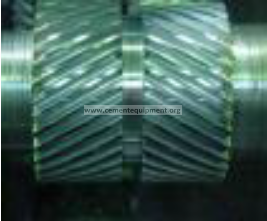
-Hypoid Gear – Gear used when shafts must cross but do not intersect. High speeds and moderate loading
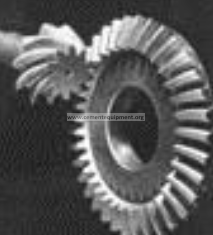
Worm Gear – Gear set for large reduction ratios. Compact with heavy load carrying ability. Produce constant output speed and torque transfer.
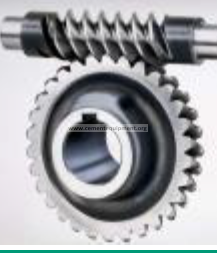
Characteristics of a Good Gear Lubricant
-Proper Viscosity
-Good Film Strength
-Good Rust Protection
-Good Oxidation Protection
-Good Demulsibility and Foam Resistance
-Good Anti-wear Properties
Gear Box Lubrication possible disruptive points
-Gear wear
-Venting
-Operating temperature
-Leakage
-Excessive loads
-Contamination
-Lubricant
Open Gear Lubrication possible disruptive points
-Temperature
-Dirt
-Rust
-Water
-Method of application
-Disposal of waste oil
Reasons Why Gear Sets Fail
-Surface Fatigue
-Wear & Scoring
-Plastic Flow
-Tooth Breakage
-Failure Associated with processing
Objective 6 – Filtration process and methods
-Reclamation and conditioning of lubricating oils are now standard practices. Lubricant conditioning may be accomplished by settling, centrifuging, re-refining and filtering. This topic will only cover the filtration process and methods
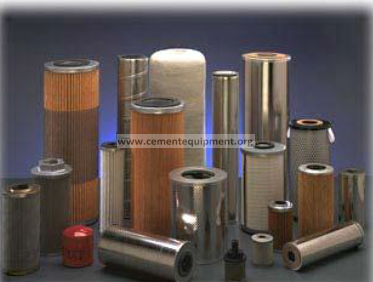
Filtration process and methods (cont’d)
-Filtering definitions
-Filtering – Removing microscopic solids in the range up to 50 to 60 microns.
-Microns – 0.000039 in. or 0.000001 meter (linear measurement)
-Straining – removing solids in size generally larger than 75 to 100 microns.
-Medium or element – the device that actually removes and retains the solids or soluble impurities.
-Element particle – size rating; dimension in microns of the particle that the element will retain to some predetermined efficiency.
Filtering definitions (cont’d)
-Element efficiency – ration of number of particles removed to number present for any particular particle-size rating.
-Influent – unfiltered portion of fluid.
-Effluent or filtrate – filtered portion of fluid.
-Absorb – depth filtration as contrasted to surface retention.
-Adsorb – filter process performed by certain media having the selective characteristic of retaining undesirable solution impurities by an adhesive phenomenon.
Characteristics
-Pressure loss versus flow
-Particle size retention
-Pore size distribution
-Efficiency
-Dirt storage capacity
Significant points
-Susceptibility of filter media to migration
-Channelling
-Rupturing
-Bypassing
-Action of various fluids
-Resistance to extraordinary temperature
Filtration equipment
-Replaceable cartridge filters
-Bulk type filters
-Inert filters
-Adsorbent or active filters
-Extended area filters
-Edge type filters
-Wire wound filters
-Magnetic filters
-Web type filters
Most mineral oil filters will be affected by water to some degree.
Filtration efficiency is impaired and flow rates reduced thereby.
If a filter is saturated thoroughly with oil before water reaches it, it usually will shed considerable amounts of water provided by flow rates, viscosities, and pressures are not too high and the water is not too finely divided or emulsified.
Proper system design and operating procedures leading to economical filtration can be obtained by controlling or eliminating entry of contaminants into a lubricating system.
Every precaution should be used to minimize entrance of water, dust, diluted fuel and other foreign matter.
There are three types of filtration systems in use today:
-Individual-machine continuous systems
-central-continuous systems
-central-reclaiming systems
Central-continuous systems
-In high-production plants, central-continuous systems are often used.
-In this method, used oil is pumped into a collecting line, goes to a central-continuous clarification system and is returned clean to the machines.
-Some operations require individual machine continuous filtration, while in others, oil is used for several days, taken to central-reclaiming plant, reconditioned and returned to use.
Hydraulically actuated machinery
-Hydraulic oils do not become contaminated in the same sense as engine oils; nevertheless maintenance is required.
-Continuous filtration is the best way to maintain these oils in the best condition, although intermittent filtration has proved very successful.
-The proper filtration of hydraulic oils prevents excessive ware of hydraulic parts, prevents clogging and sticking of control valves and pistons and extends oil life.
-When straight mineral oils are used adsorbent filters are very satisfactory.
-Inert filters are recommended for systems employing oils containing oxidation and corrosion inhibitors and will maintain these oils essentially free of abrasives.
Synthetic fluids
-Synthetic fluids are sometimes used in place of petroleum oils because of some shortcomings of petroleum oils such as their inflammability and oxidation characteristics.
-Filtration equipment for synthetic fluids varies with the liquid. Both inert and active earth filters have proved very satisfactory.
Conclusion
-The trend in filtration is toward the removal of smaller and smaller particles. It is generally found that the filtration cost varies inversely with the size of the particle retained.
-Continuous filtration is the most efficient and economical way to operate. It is preferred over intermittent filtration or batch filtration because contaminants are removed from the lubricant as they are formed, thereby allowing the engine or machine to operate on clean oil at all times.
Conclusion (cont’d)
-Adsorbents are widely used in the conditioning lubricating oil. The most commonly used adsorbent are fuller‟s earth, acid-activated bentonites, bauxite, and activated silicate.
-Centrifuges are extremely economical and simple to operate, create no loss of additive content and occupy very little space
.
-The most important saving accruing from lube-oil conditioning is in the extended useful life of the engine or machine involved.
Objective 7 – Best Practices & Inspections
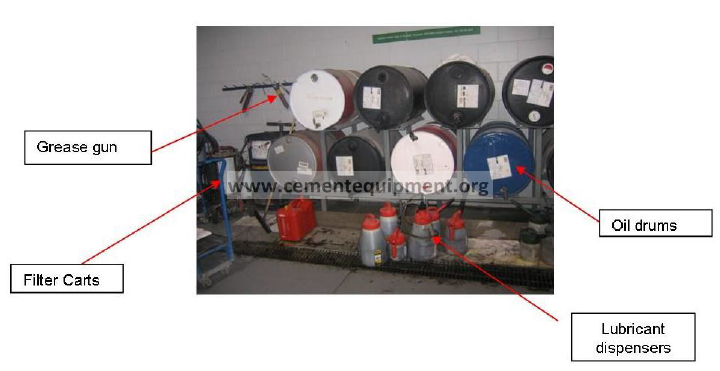
Best Practices & Inspections (cont’d)
-Oil analysis/Cleanness
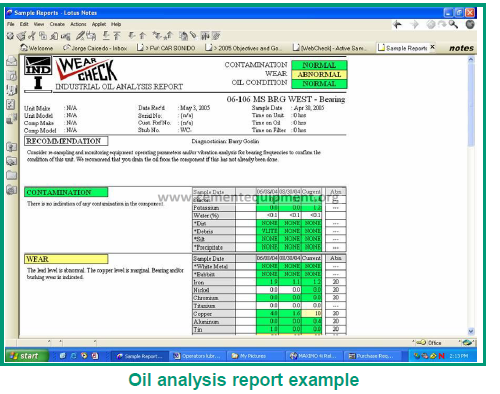
Best Practices & Inspections (cont’d)
-Lubricants must be kept cool, clean and dry
-All oil dispensing containers/equipment should be kept clean
-No level of oil contamination is allowable
-All grease and oil drums, kegs and tanks should be properly identified
-Proper „oil-house‟ rotation of lubricants is essential
-Lubricants have a shelf life
-Dust acts as an insulator – creates heat. Wipe dust
-Check oil reservoir ventilation and filter maintenance
Objective 8 – Troubleshooting
Circulating System problems:
-Low pressure
-High pressure
-Low flow
-High temperature
-Spray System problems:
-Lubrication does not occur
-Lube fault
-Farval System problems:
-Lubrication doesn‟t occur
Objective 9 – Safety
-General speaking lubricants do not represent any risk; however they should be properly handled, stored and manipulated.
-Lubrication or hydraulic systems where high temperature and pressure are present might become a safety hazard, if a line, valve or seal fails.
Safety (cont’d)
-General recommendations are:
-Piping, houses, seal, should be installed according to operational conditions including possible extreme conditions and a per government regulations.
-Safety switches (pressure, temperature, etc.) should be operational and not jumped out.
-For lubricant handling and storage; using the proper rigging and storing tools will greatly eliminate the risk of accidents.
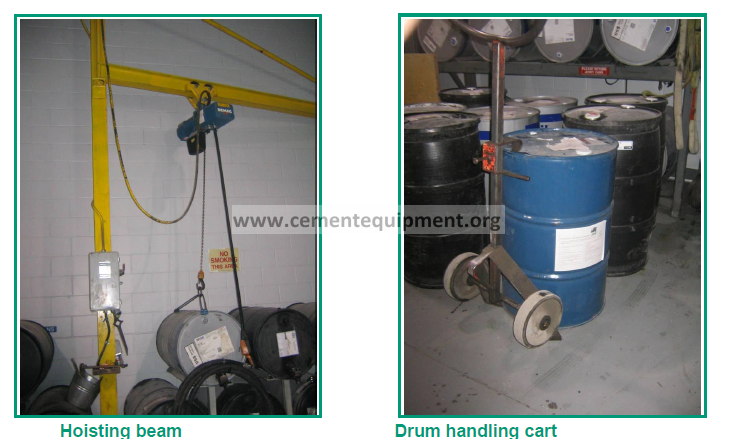
Cleanness: Oil spills represent an accident hazard. Maintaining a clean and well organized area will prevent accidents and will help to detect potential problems.
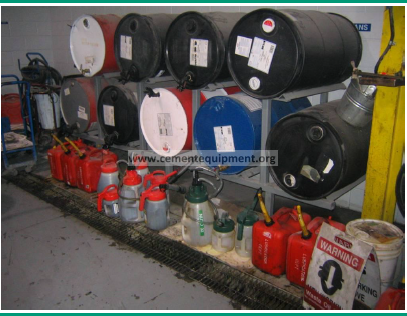
-Lubricants disposal: Government regulations should always be followed and the resources provided for an adequate waste management.
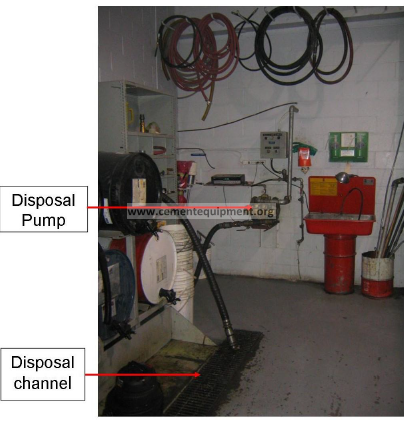
Lesson Review
-Define what friction is and how lubrication relates to friction.
-A force that a body must overcome when slides across another. Solid friction is present when two rigid bodies are in contact and fluid when liquids or gases molecules are in motion. Solid or sliding friction occurs mainly due to asperities present in two surfaces that rub together. When ever friction is overcome, moreover, dislocation of the surface particles generates heat that could become destructive. Additionally where there is solid friction, there is wear; a loss of material due to the cutting action of opposite asperities. Lubrication reduces or eliminate potential equipment failure due to the friction action and also reduces the power consumption by reducing friction between sliding each other.
-The principle of supporting a sliding load on a friction-reduction film is known as lubrication. Lubrication reduces friction, prevents wear, removes heat and prevents rust and corrosion.
Describe the 3 main types of lubricants.
Oils.
Mineral: Consist of base oil and additives which determine their performance characteristics
Synthetic. Chemically synthesized (polymerization) and designed to have specific properties.
Industrial grease. Is a fine dispersion of an oil-insoluble thickening agent, usually soap, in a fluid lubricant which is generally mineral oil
Solid Lubricants. There are may type of solid lubricant used for different applications, like synthetic, metallic or mineral powders.
Describe the main lubricants properties.
Mineral Oils
Oxidation stability
Anticorrosion properties
Wear protection
Wetting behaviour
Viscosity-temperature behaviour
Synthetic oils
Low pour point and /or
High flash / fire point and/or
High viscosity index and /or
Oxidative and thermal stability and /or
High shear strength
Industrial grease
nature and amount of thickener
characteristic of mineral oil
whether additives are used
the way the grease is made
Solid Lubricants
synthetic
metallic
mineral powders
What are the advantages and disadvantages of synthetic oil?
-These properties enable the lubricant to handle tougher conditions (high temperature, temperature change, water contamination, etc.) better that its equivalent mineral oil, however due the high cost they are used only under special conditions.
Describe three types of oil lubrication systems.
-Oil bath
-Splash
-Circulating system
-Spray System
-Manually
-Central System (Farval)
Describe what oil analysis is and its purpose.
In the past the oil was changed only based on time, that is, in some plants the oil was changed days or months after the last change without any consideration of the oil condition. For mobile equipment especially, the oil was changes based on miles or running time. However today it is more common to find plants implementing oil changes based on oil analysis. This procedure not only provides information about the oil condition but also about the equipment condition. Sometimes it can detect equipment problems even before a vibration analysis would pick it up. The oil analysis provides information in regards to the oil degradation, contaminants and metal particles due to wear. It also helps to reduce lubricants consumption costs and maintenance costs by preventing failures and repairing equipment based on their condition rather that on a fixed time period.Describe what oil analysis is and its purpose.
In the past the oil was changed only based on time, that is, in some plants the oil was changed days or months after the last change without any consideration of the oil condition. For mobile equipment especially, the oil was changes based on miles or running time. However today it is more common to find plants implementing oil changes based on oil analysis. This procedure not only provides information about the oil condition but also about the equipment condition. Sometimes it can detect equipment problems even before a vibration analysis would pick it up. The oil analysis provides information in regards to the oil degradation, contaminants and metal particles due to wear. It also helps to reduce lubricants consumption costs and maintenance costs by preventing failures and repairing equipment based on their condition rather that on a fixed time period.Describe what oil analysis is and its purpose.
In the past the oil was changed only based on time, that is, in some plants the oil was changed days or months after the last change without any consideration of the oil condition. For mobile equipment especially, the oil was changes based on miles or running time. However today it is more common to find plants implementing oil changes based on oil analysis. This procedure not only provides information about the oil condition but also about the equipment condition. Sometimes it can detect equipment problems even before a vibration analysis would pick it up. The oil analysis provides information in regards to the oil degradation, contaminants and metal particles due to wear. It also helps to reduce lubricants consumption costs and maintenance costs by preventing failures and repairing equipment based on their condition rather that on a fixed time period.
-Details as per lubrication systems information.
Describe what oil analysis is and its purpose.
-In the past the oil was changed only based on time, that is, in some plants the oil was changed days or months after the last change without any consideration of the oil condition. For mobile equipment especially, the oil was changes based on miles or running time. However today it is more common to find plants implementing oil changes based on oil analysis. This procedure not only provides information about the oil condition but also about the equipment condition. Sometimes it can detect equipment problems even before a vibration analysis would pick it up. The oil analysis provides information in regards to the oil degradation, contaminants and metal particles due to wear. It also helps to reduce lubricants consumption costs and maintenance costs by preventing failures and repairing equipment based on their condition rather that on a fixed time period.
Low pressure
High pressure
Low flow
High temperature
What are the main considerations when dealing with hydraulic systems in regards to safety?
Piping, houses, seal, should be installed according to operational conditions including possible extreme conditions and a per government regulations.
Safety switches (pressure, temperature, etc.) should be operational and not jumped out.
For lubricant handling and storage; using the proper rigging and storing tools will greatly eliminate the risk of accidents.
Cleanness: Oil spills represent an accident hazard. Maintaining a clean and well organized area will prevent accidents and will help to detect potential problems.
Lubricants disposal: Government regulations should always be followed and the resources provided for an adequate waste management.
What are the two main categories of bearings?
Plain
Rolling element
What is the purpose of gearing?
Gearing is used to transmit power from a prime mover to a final source with either an increase or decrease in power or torque or a change in direction or plane from that of the initial source.
Name 3 oil additives.
Antiwear agent (aw)
Extreme pressure (ep)
Oxidation inhibitors
Detergent
Dispersant
Rust inhibitor
Viscosity (vi) improver
Pour point depressant
Molybdenum disulfide
Defoamant
What are the components of grease?
Oil
Thickener
Additives
Name the 3 lubrication categories.
Hydrodynamic lubrication
Boundary lubrication
Elastohydrodynamic lubrication (EHL)
What is viscosity?
Viscosity is defined as a measurement of a fluid‟s resistance to flow.
Name 3 type of oil filters.
Replaceable cartridge filters
Bulk type filters
Inert filters
Adsorbent or active filters
Extended area filters
Edge type filters
Wire wound filters
Magnetic filters
Web type filters
What is the most important saving obtained from oil conditioning?
The extended useful life of the engine or machine involved.